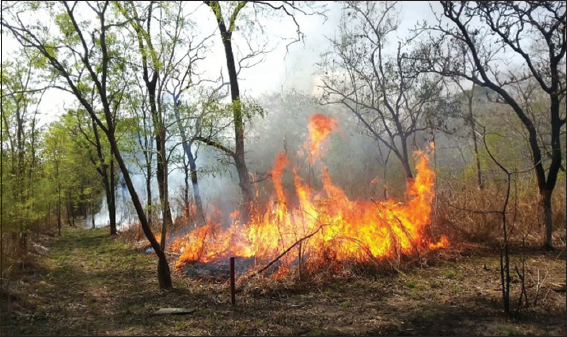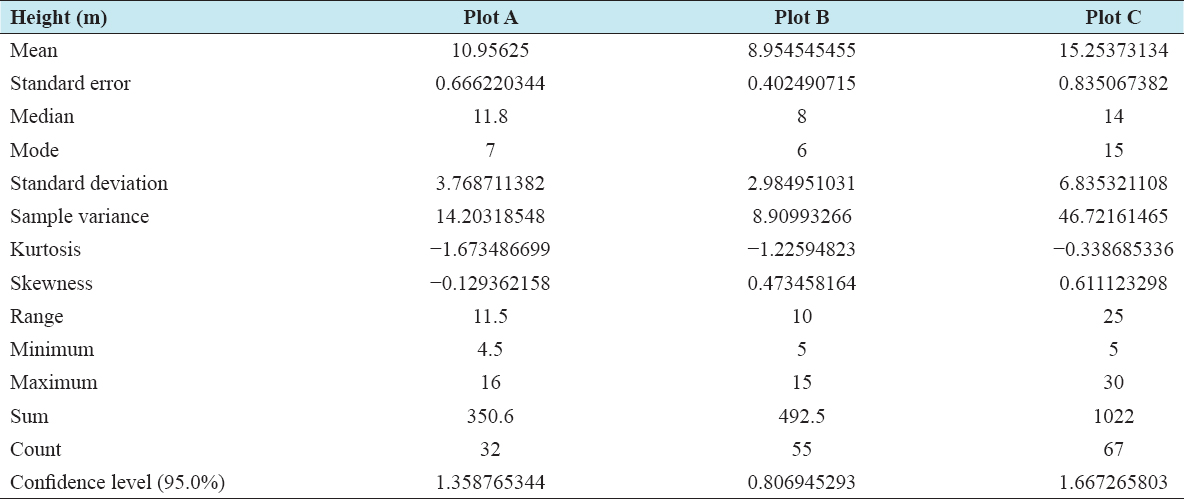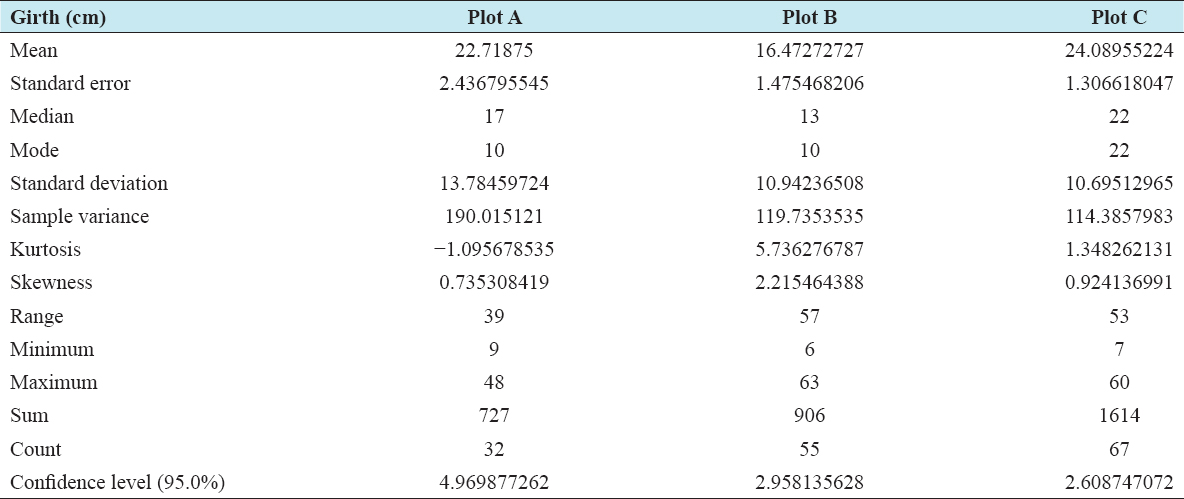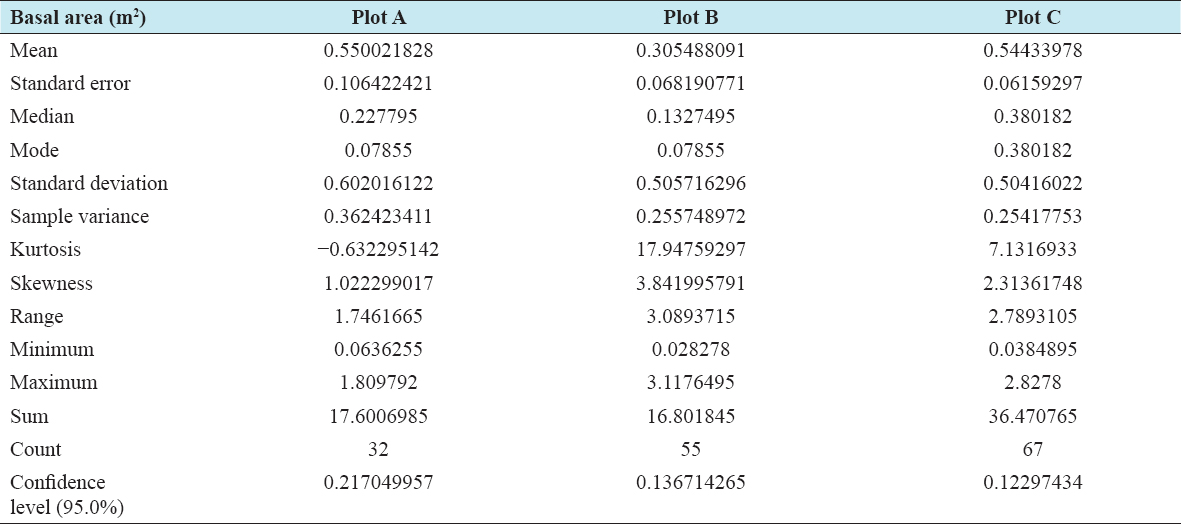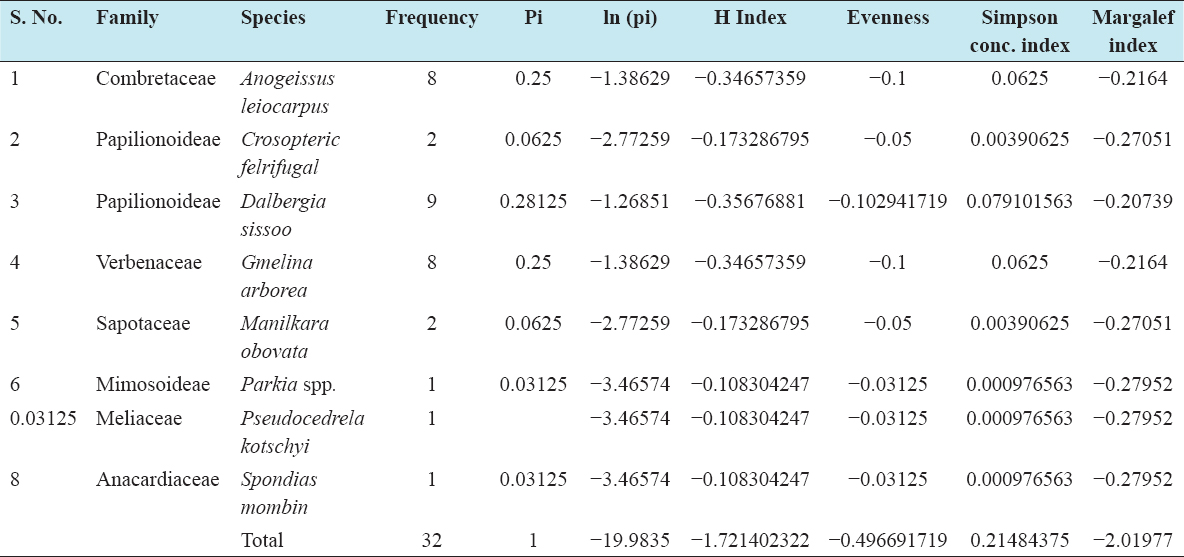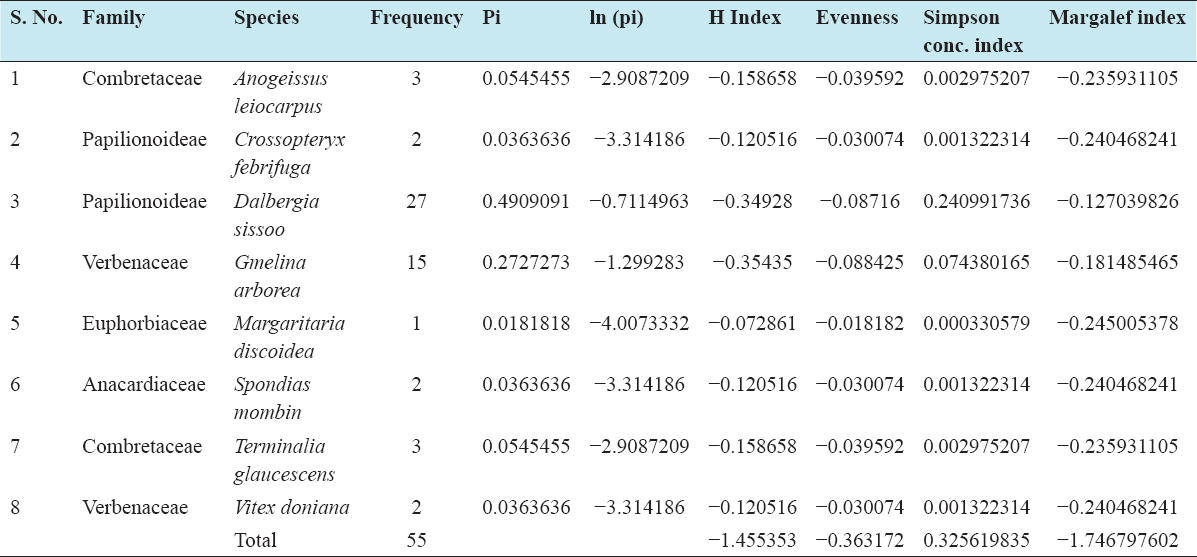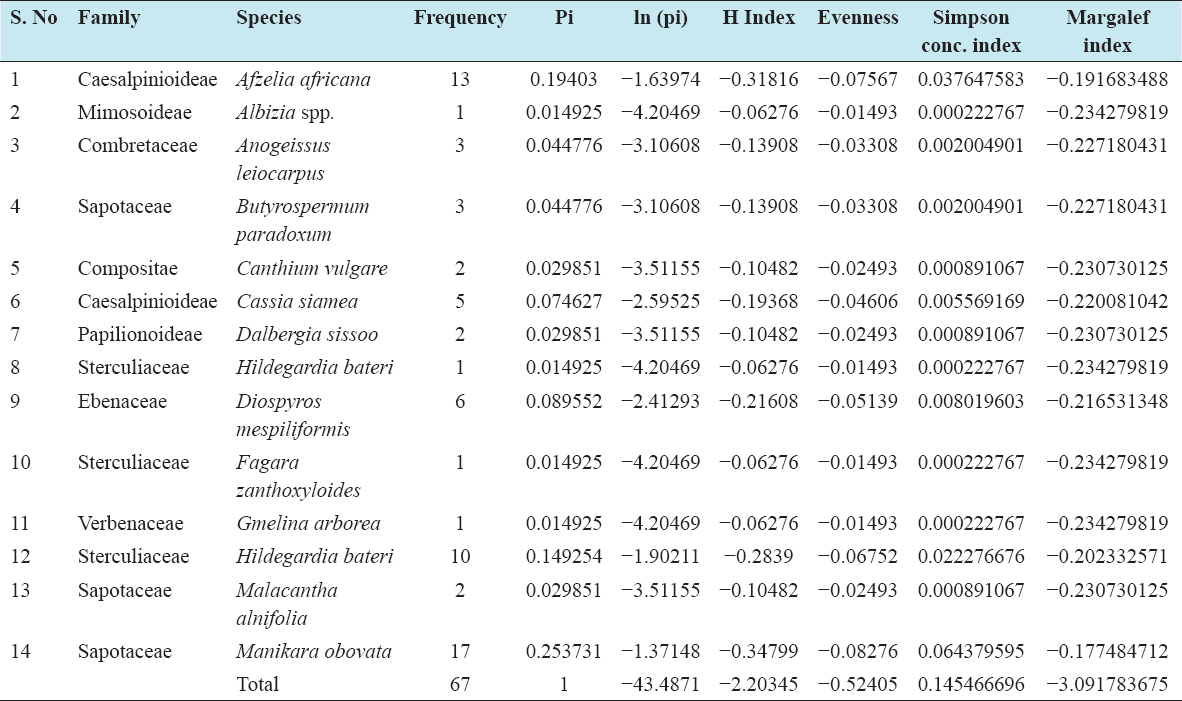Effects of forest fire on tree species diversity in olokemeji Forest Reserve, Ogun State
A. J. Oloketuyi1, A. F. Ibimilua2, O. D. Akinyemi1*, O.J. Oyelowo1, O. R. Olatidoye1
1Department of Forest Conservation and Protection, Forestry Research Institute of Nigeria, PMB. 5054, Jericho, Ibadan, Nigeria; 2Department of Geography and Planning Science, Ekiti State University, Ado Ekiti, Nigeria
ABSTRACT
The effect of forest fire on the forest trees at Olokemeji forest reserve (F.R.) was established in this study. The fire experimental plot was selected at the reserve. The site was divided into three plots; plot A was tested with late fire treatment, plot B was tested with early fire treatment, and plot C (without fire treatment). The diameter at breast height and tree height (m) of the tree species in the plots were assessed prior and post-fire treatment. The diversity indices such as Shannon Wiener diversity index (H+), Simpson index, Margalef index, and species evenness were also obtained. The result of the tree height (m) showed that the highest tree height was in plot C followed by plot A and plot B with mean value of 15.25, 10.95, and 8.95 m, respectively. The highest basal area (m2) was found in plot C followed by plot A and plot B with a mean value of 0.64, 0.55, and 0.30 m2, respectively. The number of stems per plot ranged from 25 to 67. The Shannon Wiener diversity index shows that plot C had the highest index followed by plot A and plot B with value of 2.20, 1.72, and 1.45, respectively. The Margalef index ranged from 1.74 to 1.09, while Simpson index ranged from 0.14 to 0.32. This study has established the effect and relevance of fire on forest and wildlife management. Hence, the study recommends that this kind of research should be replicated in other F.Rs in other to have continuous foster future dynamics of the forest ecosystems. Fire is to be completely protected from the forest to prevent vegetation switch from forest to savanna and the production of timber. Prescribed or controlled burning is an appropriate silvicultural management tool for stimulating basal area growth, production of tree species seedlings and saplings.
Keywords: Fire regime, fire treatment, forest fire, species composition, species diversity


